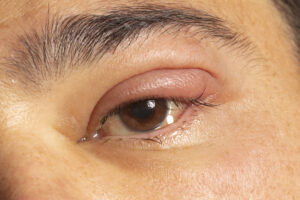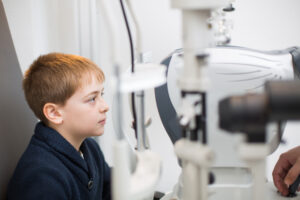Macular degeneration is the most common reason for irreversible vision loss in people over the age of 60. The chance of acquiring age-related macular degeneration (AMD) increases, of course, with age. The odds of developing AMD are 1 in 3 if you are 75 years old or older.
The macula is located on the retina; the retina is responsible for converting light into the images we see. The macula is an area of the retina that is responsible for fine detail, which is crucial for activities such as reading, driving a car, recognizing faces, and seeing colour and contrast.
Macular degeneration advancement
The progression of age-related macular degeneration can be broken down into four stages:
Sub-clinical AMD
Before any visible physical changes to the macula occur, patients start to lose their capacity to adjust to dark settings.
Early Stage AMD
The early stages of AMD do not cause vision loss in most people, so it is crucial to get regular eye exams, especially if you have more than one risk factor (see below). The presence of medium-sized drusen (yellow deposits beneath the retina) is required to diagnose early AMD..
Intermediate AMD
At this stage, there may still not be any visible symptoms. During a thorough eye exam, the retina will be closely examined for pigment changes and larger drusen.
Late AMD
At this point, noticeable vision loss has set in, which can be attributed to either advanced dry AMD (also known as geographic atrophy) or wet AMD.
AMD Forms
Dry
Dry age-related macular degeneration is the most common kind of macular degeneration, accounting for approximately 80 percent of all identified cases. In this form of macular degeneration, drusen (yellow deposits) appear under the macula of the retina. This kind of AMD typically worsens gradually over time, with symptoms often not appearing until the later stages.
Wet
The development of new blood vessels that are abnormally small and fragile can lead to wet age-related macular degeneration, as these vessels can break and leak blood or fluid onto the macula. This results in scarring and loss of vision. Wet AMD typically manifests more quickly, and can swiftly lead to severe visual loss.








